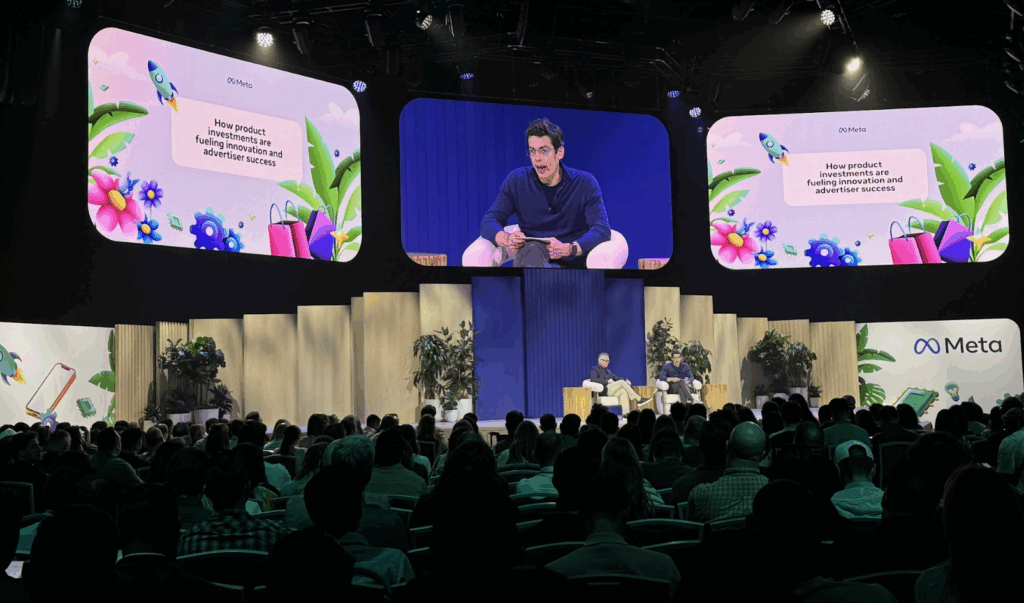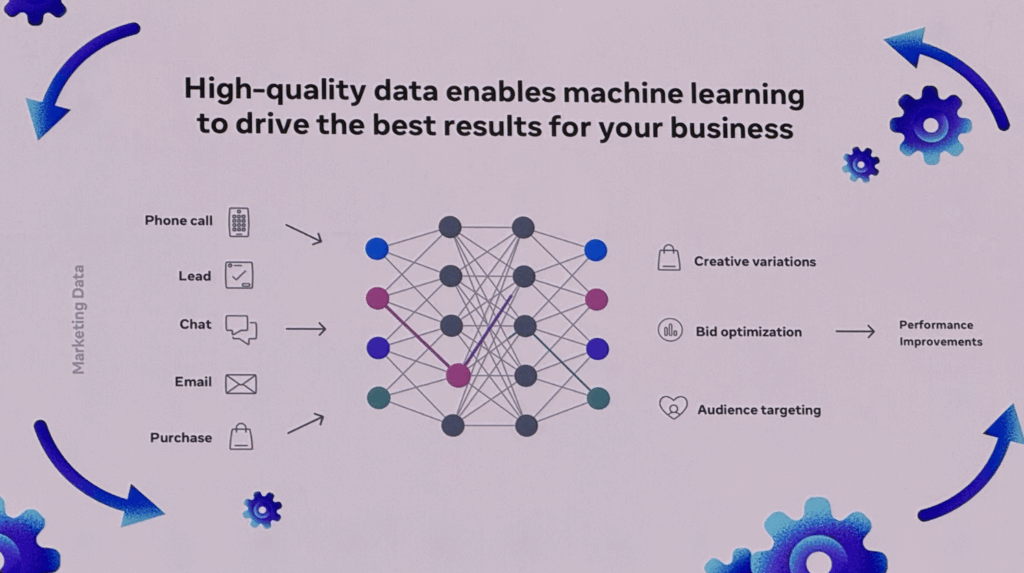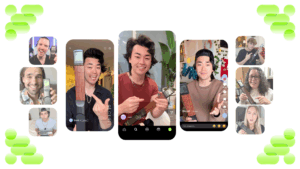Meta Performance Marketing Summit 2025 Recap: AI, Advantage+, and the Future of Paid Media
Co-founder & CEO of Billo - a Creative Performance Engine turning real creator videos into high-performing ads. Helping brands grow with authentic human content and true data-backed decisions.

Meta’s ad ecosystem is evolving faster than ever, and so are the strategies to win on it.
At this year’s Meta Performance Marketing Summit 2025, I had the opportunity to hear directly from Meta’s leadership about what’s coming next. The big message? AI-driven personalization, smarter creative, and high-quality data are no longer optional — they’re the foundation of performance marketing success.
In this post, I’ll share the key takeaways I brought back from the summit and what they mean for marketers today.

AI Everywhere: The New Era of Meta Ads
Meta is moving rapidly toward an AI-first future — and as marketers, we need to keep pace. This year’s summit showcased how AI is transforming not just ad delivery, but every part of campaign optimization and creative strategy. Here’s what stood out:
Andromeda: Smarter ad delivery
One of the most exciting announcements at the summit was Andromeda, Meta’s new AI-powered ranking engine.
Andromeda dynamically matches each ad to the optimal person and moment — meaning ad delivery is now more precise and relevant than ever. This isn’t just theoretical: it’s already driving better outcomes on Meta platforms.
For us at Billo, this underscores why creative and data quality matter more than ever. If your signals are clean and your creative resonates, Andromeda can amplify your performance. That’s why we’re focused on helping brands optimize both through better data and smarter UGC strategies.
GEM: AI-powered creative & placement recommendations
Meta also introduced GEM, short for Generative Ads Recommendation Model. This AI-driven system analyzes campaign performance data to automatically suggest new creative concepts and optimized placements.
Early results are promising. In testing, GEM delivered about a 5% lift in conversions on Reels, which is a meaningful performance boost with minimal manual effort.
At Billo, this reinforces what we’ve long believed: creative agility is key. With GEM accelerating creative iteration, brands that can feed it a diverse, high-quality supply of content will stay ahead.
The 3–5 year vision: Real-time personalization
Meta’s vision for the next few years is bold: fully personalized ad creative and audience combinations, delivered in real time. As their AI capabilities grow, this vision is quickly becoming reality.
What does this mean for us as marketers? We’re moving beyond static placements and manual targeting. Instead, the winning play will be feeding Meta’s systems with high-quality data and a rich creative library, so that AI can dynamically serve the best possible experience to each user.
At Billo, we’re leaning into this shift by helping brands scale data-backed, performance-driven UGC. The goal: empower AI to deliver the right creative, to the right person, at the right moment — every time.

Why Advantage+ Keeps Beating Manual Campaigns
One message came through loud and clear at the summit: manual campaign management is falling behind. Meta’s Advantage+ campaigns are now consistently delivering stronger results, and brands that embrace this shift are pulling ahead. Here’s what I took away:
Performance gains with Advantage+
Meta shared some impressive numbers: on average, Advantage+ drives a 37% lift in incremental conversions versus manual campaigns.
This is no surprise to us at Billo — we’ve seen similar gains when we help brands optimize for broad targeting and high-quality conversion signals. The takeaway? Automated campaign optimization isn’t just more efficient; it often outperforms human-managed setups.
If you’re still clinging to manual workflows, now is the time to rethink your strategy.
Best practices for leveraging Advantage+
To get the most out of Advantage+, Meta shared several best practices:
First, broad audience targeting is key. The more room you give Meta’s AI to optimize delivery, the better the results. Resist the urge to over-segment.
Second, focus on high-quality conversion events and ensure strong CAPI-Pixel parity. Clean, consistent event signals give Advantage+ the data it needs to optimize effectively.
In short: the more you trust the system and feed it reliable signals, the more Advantage+ can deliver.
High-quality data: Your competitive edge
As Meta’s ad systems become increasingly AI-driven, data quality is becoming the ultimate differentiator. Without clean, consistent signals, even the smartest AI can’t optimize effectively. Here’s how to build a true data advantage:
The three pillars of high-quality data
Meta defines high-quality data through three key pillars:
- Reliability: Are your data signals accurate and timely? Without this, optimization suffers.
- Matchability: Do your user signals map cleanly to Meta’s user graph? Higher match rates = better targeting and attribution.
- Proper usage: Are you applying your data correctly within Meta’s systems to drive the right outcomes?
How to maximize match rates with Conversions API and Pixel
One of the smartest things you can do right now is ensure your Conversions API (CAPI) and Pixel are working together seamlessly.
Meta emphasized this at the summit: using both systems in tandem helps maximize match rates, which provides AI tools like Andromeda and GEM with cleaner, higher-fidelity signals. A key best practice is achieving strong CAPI-Pixel parity. Both systems should send consistent, duplicate-free event data.
Pro tip: Monthly data issue fixes
Meta shared a simple but powerful habit: appoint one person on your team to audit and fix one high-impact data issue per month.
This incremental approach steadily improves data quality over time. Fixing just one issue each month might not sound like much. But over the course of a year, it adds up to a significant competitive edge.
Moving beyond last-click: Incrementality as the new measurement standard
Measurement is evolving — fast. At the summit, Meta made it clear that incrementality is becoming the new gold standard for understanding ad impact. This shift is especially important as younger audiences, like Gen Z, interact with ads in more complex, non-linear ways. Here’s what this means for performance marketers:
Why incrementality matters
Gen Z rarely clicks on ads. In fact, relying on last-click ROAS to measure success often misses the true value of your campaigns.
Meta is moving toward an incrementality-first model, which helps marketers understand the actual causal impact of their ads, beyond simple clicks or tracked purchases. Measuring incrementality gives a much clearer picture of which creatives, audiences, and channels are really driving growth.
Lift studies and automated tools coming to Ads Manager
Meta is investing heavily in automated lift-study capabilities, with new options rolling out inside Ads Manager this year.
One tool that really caught my attention is the upcoming Incremental Attribution beta. It’s designed to help brands move beyond over-relying on last-click ROAS, providing a more holistic view of campaign impact.
Scaling creative supply chains with AI (and human insight)
The volume and diversity of creative needed to fuel today’s AI-driven ad platforms is skyrocketing. At the summit, Meta highlighted how brands are using GenAI tools to scale content production—while still relying on human insight to drive performance. Here’s how we think about this balance at Billo:
GenAI tools adoption and best practices
Over 4 million advertisers are already using Meta’s GenAI creative tools to scale ad production.
But volume alone isn’t enough. The best-performing brands are running 5–10 creative themes per quarter, blending static content, short-form video, and user-generated content (UGC).
At Billo, we help brands do exactly this. GenAI can generate more content, but authentic UGC still drives engagement and trust. The key is to use AI to accelerate production, while keeping the human element front and center.
Why cultural relevance still wins
Despite all the excitement around AI-generated creative, one truth remains: cultural relevance and authentic human insight still outperform volume.
The summit reinforced this point. No matter how fast we can scale content, ads that feel genuine, relevant, and human consistently drive better results.
At Billo, we see this every day. The best-performing campaigns combine the scalability of AI with the authenticity of real creators. We encourage brands to use AI as a scaling tool, not a substitute for creative insight.
New optimization tools marketers should try
Meta continues to roll out tools that help marketers drive better performance with less manual effort. The latest features, highlighted at the summit, are designed to help us prioritize the optimizations that matter most, making advanced tools more accessible to brands of all sizes. Here are two worth trying:
Opportunity Score: what it is and how to use it
Meta introduced Opportunity Score, a 0–100 scoring system built into Ads Manager. It helps highlight the highest-impact optimizations you can make to campaigns or ad sets.
What I like about this tool is its practicality. Rather than guessing where to spend your time, Opportunity Score surfaces specific tweaks that are likely to deliver meaningful gains.
Streamlined Advantage+ flows for SMBs
Meta is also making Advantage+ more accessible for smaller brands. New streamlined setup flows are rolling out, reducing the number of manual steps required to launch optimized campaigns.
This is an important move. Many small and mid-sized businesses (SMBs) struggle to keep up with advanced ad tools, but these updates will help lower that barrier.
At Billo, we see this as a huge opportunity. Brands of any size can now tap into AI-driven optimizations faster and with less friction. For SMBs in particular, this levels the playing field and allows them to compete more effectively.
The future of interactive & conversational ads
Meta is pushing the boundaries of what’s possible within ad experiences. One area I’m particularly excited about is interactive and conversational ads: a new format that enables richer engagement and frictionless shopping right inside Meta’s platforms. Here’s what’s coming:
Pilot features you should know
Meta is piloting a new ad format that allows users to chat with an AI agent directly inside a video ad.
Picture this: a shopper watching a shampoo ad can ask, “Is this product good for curly hair?”, and get an instant response, without leaving the experience.
At Billo, we see this as a powerful way to merge product education with conversion. When you can answer buyer questions in real time, you lower friction and improve purchase intent.
Use cases and early examples
The potential for conversational ads goes beyond product Q&A. Meta’s early pilots are enabling users to add items to their cart without leaving the app.
This creates a more seamless purchase flow, blending product discovery, engagement, and conversion in one experience.
Winning with creator-powered performance
One of the strongest themes at the summit was the growing role of creators in driving not just awareness, but performance. Meta shared compelling data showing how creator-powered ads are outperforming traditional campaigns across key metrics. Here’s where we see the biggest opportunities:
The impact of Partnership Ads + Creator Marketplace
Meta reported that combining Partnership Ads with its Creator Marketplace is delivering impressive results—up to 19% lower acquisition costs and double-digit brand lift.
This aligns perfectly with what we see at Billo. When brands integrate creators directly into performance marketing, not just for top-of-funnel awareness, results improve across the board.
Dynamic Identity Optimization: what’s coming next
Another exciting development is Dynamic Identity Optimization—a new Meta tool that will automatically test multiple creator handles across audience segments to find the best-performing combinations.
This takes creator testing to a new level. It’s not just about testing creative assets anymore; it’s about understanding which creator identities drive the strongest engagement and conversions.
At Billo, we see huge potential here. Our Creative Performance Engine already helps brands match with high-performing creators. Tools like this will make it even easier to optimize both creative strategy and creator selection.
Building long-term creator relationships
One of the key points Meta stressed is that long-term creator partnerships consistently outperform one-off collaborations. Brands that invest in building a reliable, authentic creator supply chain see stronger results over time.
At Billo, we see this every day. Creators who work with a brand over multiple campaigns develop a deeper understanding of its voice and audience. The result is content that feels more authentic and drives better performance.
If you want to stay competitive, this is the play: move beyond whitelisted posts and focus on building durable, trust-based relationships with your best-performing creators.
How Billo helps you stay ahead
Everything we heard at the Meta Performance Marketing Summit 2025 reinforced the importance of creative agility, data-driven decisions, and scaling what works. This is exactly where Billo is focused. We’re building tools to help brands navigate this AI-first landscape with smarter, faster UGC strategies.
Creative Performance Engine
Billo’s Creative Performance Engine is designed to take the guesswork out of UGC. It enhances every creative decision with insights drawn from more than 150,000 video ads and over $280 million in purchase value generated.
The result? Brands can make smarter choices about casting, creative direction, and testing — all before production even starts. It’s a system built for today’s AI-driven ad environment, where the right creative, backed by data, can dramatically improve return on ad spend.
The big picture: what marketers should focus on now
If there’s one takeaway from the Meta Performance Marketing Summit 2025, it’s this: the game has changed. Success now depends on combining AI-driven personalization, high-quality data, and creative agility.
Tools like Andromeda, GEM, and Advantage+ aren’t just helpful — they consistently outperform manual approaches. Measurement is shifting too, with incrementality becoming the new gold standard. Marketers who rethink how they scale Facebook ads around these tools are pulling ahead.
And through it all, UGC and creator partnerships continue to drive outsized performance, especially in ecommerce Facebook ads, where authenticity fuels trust and conversions.. At Billo, we’re helping brands lean into these trends by building data-powered creative strategies that scale. The opportunity is huge, but only if you’re ready to adapt.
Action checklist
Here’s what I’d prioritize coming out of this year’s summit — and what we’re focusing on at Billo:
- Turn on Advantage+ for key campaigns and compare lift. If you’re still running manual campaigns, now’s the time to test Advantage+. Benchmark incremental conversions and see how automation stacks up.
- Audit CAPI and Pixel match rates; fix reliability gaps. High match rates are critical for giving Meta’s AI the clean signals it needs. Assign an owner to audit data flow and close any reliability gaps.
- Schedule a lift study to benchmark true incrementality. Last-click ROAS is out. Use Meta’s new lift-study tools to get a clearer view of how your campaigns really drive impact.
- Refresh creatives with at least five concepts. Diversity matters. It’s also worth understanding how creative strategies should flex across platforms. Comparing results for TikTok ads vs. Facebook ads can help fine-tune your mix.
- Enable Opportunity Score suggestions and knock out the top three. Use Opportunity Score in Ads Manager to identify and implement the highest-impact optimizations first.
- Test Partnership Ads with proven creators. Go beyond whitelisted posts. Partner with creators who can drive measurable results — and aim to build longer-term relationships that compound over time.
CEO & Co-founder
Co-founder & CEO of Billo - a Creative Performance Engine turning real creator videos into high-performing ads. Helping brands grow with authentic human content and true data-backed decisions.

Authentic creator videos, powered by real performance data
22,000+ brands use Billo to turn UGC into high-ROAS video ads.
Meta Andromeda Update Explained: Creative Volume...
Meta Andromeda update marks a major shift in how ads [...]...
Read full articleFrom Barbie to Duolingo: Social Media Marketing ...
Inspiring social media marketing campaigns help marketers push beyond performance metrics and [...]...
Read full articleInside the Campaigns: How Brands Win with Creato...
Creator-led advertising is no longer experimental. It reliably outperforms traditional [...]...
Read full article



